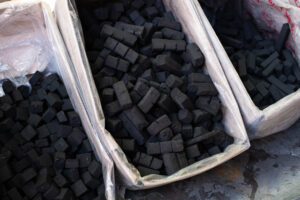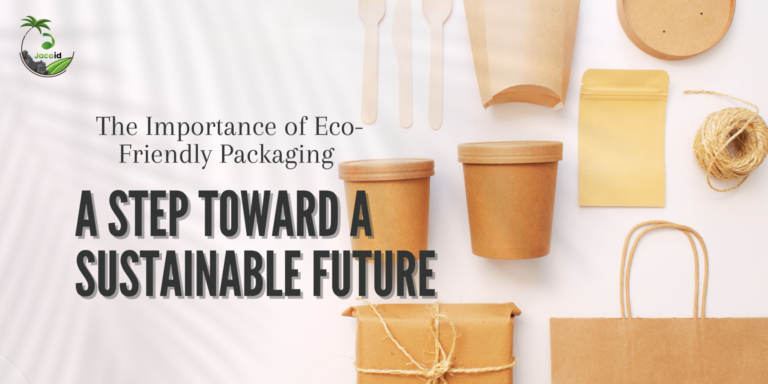Traditional Charcoal vs Charcoal Briquettes, Which is More Friendly Towards Renewable Resources?
In recent years, awareness of the use of renewable resources has been increasing. One of the fuels that is still widely used is traditional charcoal, both in the form of regular charcoal and charcoal briquettes. Both play an important role in industry and daily life, especially for cooking and heating needs. However, there are fundamental differences between regular charcoal and charcoal briquettes, each with its own advantages and disadvantages.
What is traditional charcoal?
Traditional charcoal is a fuel made by heating wood or other organic materials without the presence of oxygen in a process called pyrolysis. This process produces a solid black fuel that has a high carbon content. Charcoal has been used for thousands of years as fuel for cooking, metal industries, and other sources of heat energy.
Challenges in the Use of Traditional Charcoal
Although traditional charcoal offers many benefits as an energy source, several challenges must be addressed to improve its sustainability and efficiency. Below are detailed descriptions of these challenges:
1. Emissions of Pollutants
One of the significant issues related to traditional charcoal burning is the release of harmful pollutants into the air. When charcoal is burned, the process produces smoke that contains various harmful substances, such as carbon monoxide and fine particulate matter. These pollutants can have serious impacts on air quality and public health, particularly in densely populated urban areas. Poor air quality can lead to respiratory problems, allergies, and heart disease. Therefore, it is crucial to develop technologies and methods that can reduce emissions during the charcoal combustion process, making its use safer and more environmentally friendly.
2. Sustainability of Raw Materials
The production of traditional charcoal heavily relies on wood as the primary raw material. If wood harvesting is not managed properly, it can lead to serious issues such as deforestation, loss of biodiversity, and destruction of natural habitats. Deforestation not only threatens ecosystems but also exacerbates climate change by reducing the number of trees that can absorb carbon dioxide. Therefore, implementing sustainable forest management practices is vital to ensure the availability of resources. This can include reforestation, using wood from renewable sources, and strict monitoring of illegal logging.
3. Availability and Accessibility
In some areas, especially in rural and remote locations, the availability of traditional charcoal can be problematic. Competition with alternative fuels that are more modern, such as gas and electricity, may also reduce the demand for charcoal. Additionally, a lack of adequate distribution infrastructure often makes charcoal difficult to access for communities. This can lead to increased prices for charcoal, making it less affordable for consumers. Building better distribution infrastructure and enhancing the supply networks for charcoal are essential to ensure better accessibility for all segments of society.
4. Quality Variation
The quality of traditional charcoal can vary significantly depending on the type of wood used and the production methods employed. For instance, charcoal made from hardwood tends to have better burning properties compared to softwood. Variations in the production process, such as temperature and burning time, can also affect the quality of the charcoal produced. This uncertainty can make it difficult for users to find consistent and high-quality charcoal products. Therefore, it is important to establish clear quality standards in charcoal production and provide training to producers on effective charcoal-making techniques.
5. Environmental Regulations
Many countries have stringent regulations regarding the production and use of charcoal to mitigate its negative environmental impacts. These regulations may include restrictions on production methods, burning practices, and resource management. For entrepreneurs involved in charcoal production, complying with these regulations can increase costs and complicate the production process. However, well-designed regulations can also encourage more sustainable and environmentally friendly practices. Therefore, collaboration between governments, producers, and the community is crucial to ensure that regulations support sustainability while considering economic needs.
What is Briquette Charcoal?
Briquette charcoal is made from compacting charcoal residues, sawdust, or other organic materials into solid blocks using natural binders. The production process involves compressing raw materials into standardized briquettes, making them more consistent in size and energy content.
Challenges in the Use of Coconut Shell Briquettes
Although coconut shell briquettes offer many benefits as a renewable energy source, there are several challenges that need to be addressed to maximize their potential use.
1. Consumer Awareness
Many people are still not familiar with coconut shell briquettes as an effective alternative fuel source. This could be due to a lack of information and education regarding the advantages of coconut shell briquettes compared to conventional energy sources. Intensive educational and promotional efforts are crucial to raise awareness about the benefits of these briquettes, including efficiency, a smaller environmental impact, and the potential for energy cost reduction.
2. Production Infrastructure
To mass-produce coconut shell briquettes and meet market demand, adequate infrastructure is required. This includes factories equipped with processing machines, as well as an efficient distribution system. However, investing in machinery and technology for briquette production can be a challenge for small entrepreneurs, especially in areas with limited resources. Support from the government or private institutions in the form of funding or training facilities can help address this issue.
3. Competition with Other Energy Sources
Coconut shell briquettes must compete with other energy sources that are already more well-known and widely used, such as gas and coal. People tend to choose fuels that they are already familiar with and trust in their efficiency. Therefore, proving the superiority and effectiveness of coconut shell briquettes, in terms of calorific value, price, and environmental impact, presents a unique challenge. This requires research and development to produce more competitive products.
4. Quality and Consistency
The quality and consistency of coconut shell briquettes in production is another challenge that needs to be addressed. Variations in raw materials, such as moisture content and the type of coconut shell used, can affect the final quality of the briquettes. If the quality of the briquettes is not maintained, it can reduce consumer trust and hinder the adoption of this product. Therefore, it is important to implement strict quality standards and conduct regular testing on the produced products.
5. Environmental Awareness and Government Policy
Another challenge faced in the use of coconut shell briquettes is environmental awareness among the community and government policy support. Although these briquettes are a more environmentally friendly source of renewable energy, not all consumers may be aware of this. Additionally, government policies that support the use of renewable energy, including incentives for producers and users of coconut shell briquettes, could be key factors in expanding the market and increasing the adoption of this product. Without adequate support, coconut shell briquettes may not achieve the expected market share.
Conclusion
In the search for sustainable energy alternatives, both traditional charcoal and coconut shell briquettes offer viable solutions, each with its own advantages and challenges. Traditional charcoal, a long-established fuel source, remains popular for various uses but is plagued by concerns such as air pollution, unsustainable sourcing of raw materials, and inconsistent quality. These issues highlight the importance of better production techniques, stricter environmental policies, and increased public education to make it more sustainable and safe for widespread use.
On the other hand, coconut shell briquettes present a more eco-friendly option, as they utilize agricultural waste, reducing environmental impact. However, obstacles like low consumer awareness, limited infrastructure for large-scale production, and competition from more familiar energy sources still hinder their adoption. To overcome these challenges, efforts such as educational campaigns, government incentives, and consistent quality control will be necessary to promote coconut shell briquettes as a mainstream fuel option.
Ultimately, the decision between traditional charcoal and coconut shell briquettes will depend on factors like availability, cost, and personal preferences. As the focus on renewable resources grows, creating an environment that supports the sustainable use of both fuel types will be essential for reducing dependence on fossil fuels and mitigating environmental harm. By choosing these alternatives, consumers can help pave the way toward a more sustainable future while benefiting from reliable energy sources.






